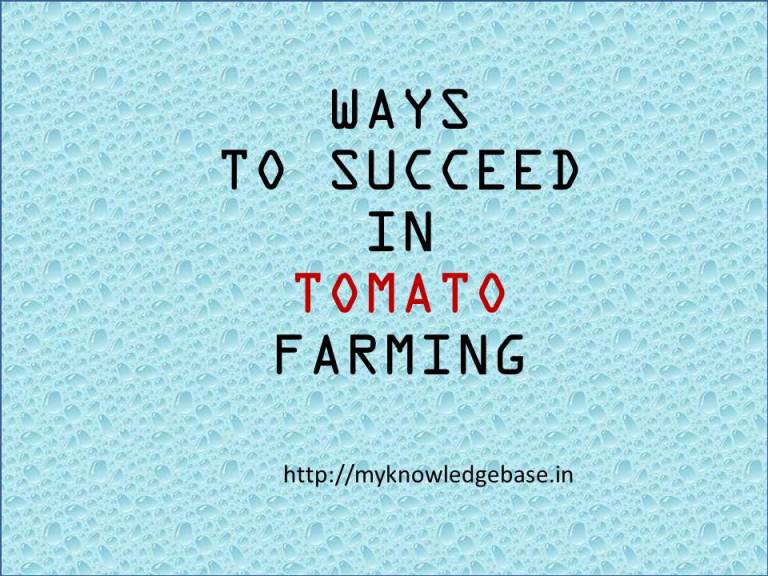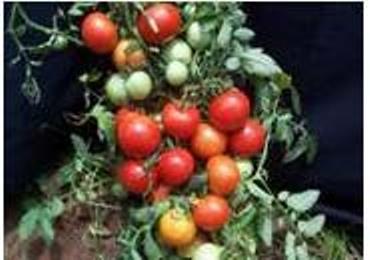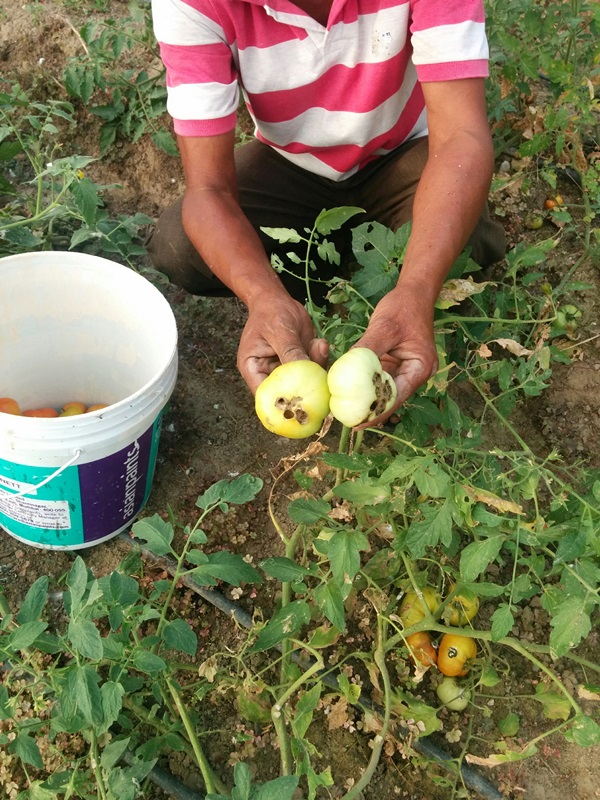TOMATO Growing and Uses Including MEDICINAL Properties
Introduction
Tomato Farming is very old in the world. Human have been growing this fruit categorised as vegetable for long.
Solanum lycopersicum, which we know as TOMATO, is a perennial plant in the Solanaceae or nightshade family. Tomato can grow all year round. It can grow from 1-3 meter tall. Some facts from wiki and other sources about this well-loved plant and its fruits are as below:
“Tomatoes originated from the Andes, in what is now called Peru, Bolivia, Chile and Ecuador – where they grew wild. They were first cultivated by the Aztecs and Incas as early as 700 AD. Tomatoes didn’t arrive in Europe until the 16th Century, although it is not known how. It has been said that they were brought back from Central America by Spanish Conquistadors.
The English word ‘tomato’ derives from the word ‘tomatl’ its name in Nahunta, the language of the Aztec people. The English form ‘tomate’ first appeared in the 17th century, and was later modified to ‘tomato’, probably under the influence of the more familiar “potato”.
Legend has it that the first tomato to be eaten in the United States was consumed in a public demonstration by John Gibbon, at Salem, Massachusetts on September 26th 1830. Despite warnings that its poison would turn his blood to acid he did not fall to the ground, frothing at the mouth, or get appendicitis, as had been predicted. It was not until the 19th Century that commercial tomato cultivation began.”
The fruit is an edible, brightly colored (usually red, from the pigment lycopene) berry, in different shapes and sizes. Though it is botanically a berry, a subset of fruit, the tomato is nutritionally categorized as a vegetable.
Suitable climate for Tomato Farming
Tomato can be grown under a wide range of climatic conditions. However, too hot or too cold weather is counterproductive to fruit size and flowering. It prefers moderate temperature in summer as well as in winter. Short days are very favorable for the formation of bulbs. It can be grown well at elevations of 1000 to 1300 m above MSL.
Commercial growing is very profitable if done in protected environment with drip irrigation and Fertigation equipment.
Soil requirements for Tomato Farming
Tomato can grow in all sorts of soils, but well drained sandy loam and clay-loam soils rich in humus with fairly good Potash content are best for its cultivation. The soil should be well aerated. Heavy soil should be avoided. Soils with high organic matter are preferred; FYM (Farm Yard Manure) or compost should be incorporated during land preparation. Soil for beds require lots of organic matter, lots of compost, dry leaves and soil compost.
Lay out should ensure that Soil has good internal drainage.
Home hobby enthusiasts would do well to make a potting mixture of equal parts of compost, perlite and peat moss or coir. Another potting mixture may be suggested to contain of 5 parts of wood chips, one part of peat moss and one part of perlite/vermiculite.
The optimum pH range for the soil is between 6 and 7.
Methods of growing Tomatoes
Tomato may be grown in two ways:
- Preparing seedlings from Tomato seeds in nurseries.
- By planting cut stalks in the pots and transplanting.
Seedlings
Tomato seeds are prepared for growing by first treating it with Trichoderma viride 4 gm/kg or carbendazim 2 gm/kg for fungal resistance. After drying the seeds are sown in raised nursery beds 10 cm apart. The nursery beds should have been given proper dosage of farm yard manure and NPK in proportion. The beds should have also been fumigated (also drenched with Bavistin) and all and any grass has been removed beforehand. Approximately 4 kg of seeds is sufficient for one hectare planting. The seeds are normally sown in the months of September/October. The Tomato seedlings are ready by January. It is suggested to spray drench the beds with NPK 19:19:19 5gm/liter 18 days after seeding.
Planting
Land is prepared by ploughing 3 or 4 times (or as required). The earth should not have any lumps or boulders. It should be well aerated. The Tomato roots penetrate deep into earth. Therefore plants should be planted in deep holes as roots will come out from the upper part of tomato plants.
Fertilizers Applications
Fertilizer application actually depends upon the soil of the farmer. It is recommended to have the soil and water analyzed before deciding on the actual quantity of fertilizers. As a normal practice the following fertilizers are indicated for Tomato farming.
Farmyard manure around 250 kg per hectare. Add following as top dressing.
100-125 kg N/hectare
50-80 kg P/hectare
50-100 kg K/hectare
Add Borax and Zinc Sulphate as per the soil report. The farmer may after studying his soil report also provide other micro nutrients if indicated.
Nitrogen fertilizers are given in two split dosage – one right in the beginning and the other after about 30 days.
The actual planting distance depends on the variety planted. For Dwarf varieties may be spaced about 12 inches apart in a row. For staked plants, space may be about 24 inches apart. Sprawling, indeterminate tomatoes are set about 36 to 48 inches apart. Tomatoes need space for good air circulation; otherwise diseases may manifest. Mulching the beds is very helpful if drip irrigation is being done.
Companion Plants in Tomato Farming
Some of the companion plants which may be grown along with tomatoes are marigolds, basil, calendula, carrots, peppers, onions and others.
Water requirement
Sufficient watering is required for Tomatoes so that plants do not have water distress. Over watering however is detrimental for the Tomato plants.
It takes 40-60 days from flowering for a tomato to reach full ripeness, depending on temperature and the variety.
Additional Spray during production
NPK 19:19:19 plus Manganese @ 1% after 45 days of planting to invigorate growth.
Spray of zinc Sulphate @ 0.5% weekly or so after about 35 days of planting.
Weed control in Tomato Farming
Weed control needs to be an important cultural operation. Weeding, thinning and earthing up are the important intercultural operations of Tomato farming.
Shallow rooted inter-row cultivation and hand weeding may be used to minimize weeds in the inter row zone.
Control of Pests and Diseases in Tomato Farming
Some information on insects, pests and disease of Tomato is discussed below. The control measures depend upon type and intensity of the problems and also whether organic or inorganic pesticides are to be used as decided by the Farmer. For more information on pests and diseases please go through my blog on same.
- Downey Mildew: spraying Dithane M-45 at interval is recommended.
- Green Jassids: spray of chloropyrofos/ dichlorvos/dimethoate/phorate/imidacloprid
- Shoot and Fruit Borer: spray endosulfan/chloropyrofos. Spread phorate.
- White Fly: spray Malathion. Drench with thimet.
- Thrips: spray imidaclorprid/chloropyrosdimethoate. Several sprays may be required.
- Caterpillar may be handpicked and removed.
- Grubs are in the earth and they chew on the roots. Later on they transform into beetles and chew leaves. Imidaclorprid spray and drenching is indicated.
- Fungal diseases, brown powdery on leaves. It is advised to remove such leaves. Spray neem oil one teaspoon into approximately 10 liters of water.
- Leaf blight makes leaves turn yellow. Even though the vigor of the plant may not be much affected, plant look becomes ungainly. Remove such leaves.
- Spray of Zineb or Mancozeb may be regularly done weekly.
- Leaf curl can be prevented by spray of dimethoate.
Some supposed Health Benefits of Tomato
Below are a collection of some commonly believed and perceived medicinal and health benefits of tomotoes. The author has no personal knowledge except he found tomato great in taste.
Vitamins
Tomatoes are a good source of Vitamins A, C and E, beta-carotene and lycopene and flavonoids. Tomatoes also contain potassium, calcium and other mineral salts.
Potassium has been linked to lowering blood pressure and calcium is vital for healthy bones and teeth.
Grilled tomatoes are high in carotene and folate.
The vitamins and antioxidants found in tomatoes are thought to combat the harmful effects of free radicals (rogue molecules) that cause cell damage, which can trigger such diseases as cancer and heart disease. According to recent research, the natural red tomato pigment, lycopene, may particularly active in protecting the body against these diseases.
Tomatoes are an excellent source of vitamin C, a nutrient known for its antioxidant action and also contain an abundance of other carotenoids, including beta-carotene, making it a rich source of vitamin A.
Lycopene
Lycopene has already been linked with reducing the risk of prostate cancer. Research has shown that a low dose of lycopene combined with vitamin E slowed greatly growth of human prostate tumors implanted in the mice in a study, compared to mice who had not had the treatment.
Tomato consumption is believed to benefit the heart among other things. Lycopene in tomato has been found to help prevent prostate, lung, stomach, pancreatic, colorectal, esophageal, oral, breast and cervical cancers. Cooked tomatoes have more than double effectiveness of lycopene.
Uses in personal life
To relieve bloodshot eyes, Chinese doctors suggest eating 1 or 2 fresh tomatoes first thing in the morning on an empty stomach.
Tomato is excellent for a face wash that loosens the top layer of dead skin cells and rub them off.
For Persistent Fatigue – Hypoglycemic people (those who have low blood sugar) are beset with constant fatigue and lack of energy; Tomatoes are useful in rebuilding their strength.
Drinking fresh tomato juice can help to regenerate the damaged, destroyed or surgically removed liver, promoting its health and well-being and counteracting the negative effects of an overly-rich diet by helping the liver break down fats and eliminate them more easily.
To get odor free and dandruff free hair, you can apply tomato paste on the scalp and wash after 15 minutes.
Antibiotic
Antibiotic (leaves) – Tomatoes have also been widely used as a natural antiseptic agent, because of its nicotinic acids.
Risks of eating TOMATO
Like with everything which has good properties, Tomato may also have some side effects. It is true that only a few studies Tomato have linked to negative side effects.
Over consumption of Tomatoes for diabetic patients can be harmful.
It goes without saying that Tomato can contain bacteria, pesticides, and other dangerous substances if it is not thoroughly washed.
Harvesting of Tomato
Tomatoes may be picked up when firm and red in color regardless of size with perhaps some yellow remaining. If some fall off before ripening, place them in a paper bag with step up and store in a cool dry place.
Tip: To ripen home grown tomatoes, place them in a paper bag with a ripe tomato and keep at room temperature.




Leave a Reply